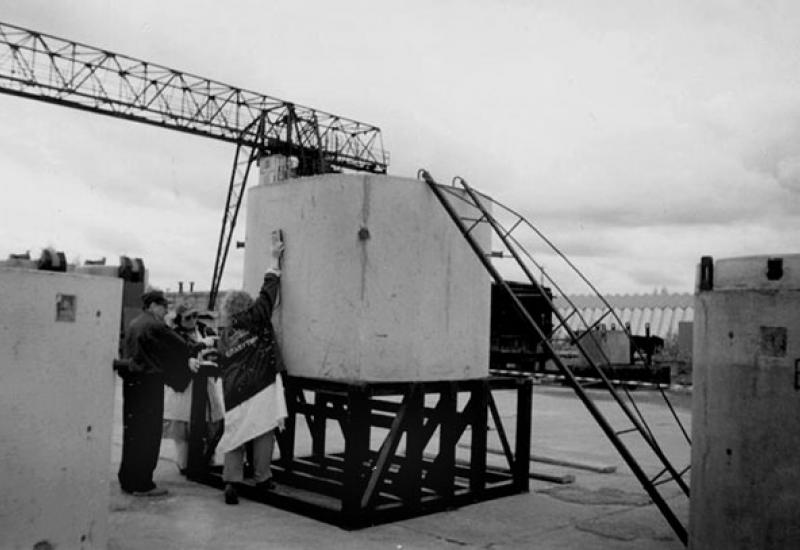More than a quarter of a century ago there was a man-made catastrophe at Chernobyl. And the problems associated with the liquidation of consequences of the accident are still relevant today. Their solution is impossible without fundamental research. All these years the scientific work of the department of chemical engineering composite materials FCT was largely subordinated to the Chernobyl issues.
Let’s briefly describe the theoretical and practical results of this work.
Dust restrained warehouses and technology work on dust restraining. Warehouses are intended for pre-processing areas of open storage areas, storage locations of toxic or radioactive waste and materials, surface engineering and construction prior to their removal, containerization. Provided the use of two types of materials: dust restraining and dust suppression.
Coatings that can be easily deactivated. The technology of weather- and corrosion-resistant composite coatings for concrete, brick and metal surfaces was developed. The durability of the coating is: on metal 7-10 years, 20-25 years on the concrete.
Poly functional organosilicon coatings, paints, enamels, which are characterized by prolonged high temperature resistance (up to 600 0 C), non-flammability, non-toxicity, weather resistance (10-15 years), hydrophobicity, good dielectric properties, resistance to low temperatures, radioactive radiation, and dilute solutions of inorganic alkalis acids.
Transport and protective containers for storage and disposal of radioactive waste. The accident resulted in the exclusion zone there was formed about 2800 thousand m3 (RW) of various types. In stores Chernobyl NPP it was saved 20 thousand m3 of liquid and 2,500 m3 of solid waste. In world practice when dealing with radioactive waste the advantage is given to concrete containers, which must meet strict requirements (working temperatures from -40 to +70 0 C, with humidity up to 100%, the life - 300 years, and others.). Employees of the department of chemical engineering composite materials developed the design and manufacturing technology of transport and protective containers for transportation, safe and long-term storage (burial) of solid waste.
Container transport and protective is manufactured according to TU U 13306137.006-2000, has certified security Department of State Nuclear Regulatory №004 Ministry of Environmental Protection and the identification number UA / 004IP-3-96. Containers are made of three kinds: STS-1.3, KTZ-3.0 (0.15), CCC-3,0 (22). With the construction of the first phase of the complex "Vector" (production for decontamination, transportation, processing and disposal of radioactive waste from areas contaminated by the Chernobyl accident); the use 4668 CBS containers was envisaged.
Technology of imobilization of liquid radioactive waste. The developed technology is intended for processing bottoms and salt melt NPP and can be used for solidification of liquid radioactive waste of various concentrations (Patent of Ukraine №64867).
The developed technology allows to reduce the final amount of the compound compared with the technology of cementing in 2.6-3.5 times. It reduces the cost of the original raw materials in 1.6-3.8 times. Compounds, which are obtained by the developed technology, are characterized by a compressive strength of 60-100 MPa, leaching of cesium - 10-4-10-5 g / sm2 invariably physical and mechanical characteristics of the material compound under irradiation dose equivalent to the calculated value of the absorbed dose over 300 years.
The developed technology has been tested on the South-Ukrainian NPP during solidification of liquid radioactive waste - bottoms with salt content of 400 g / l.

